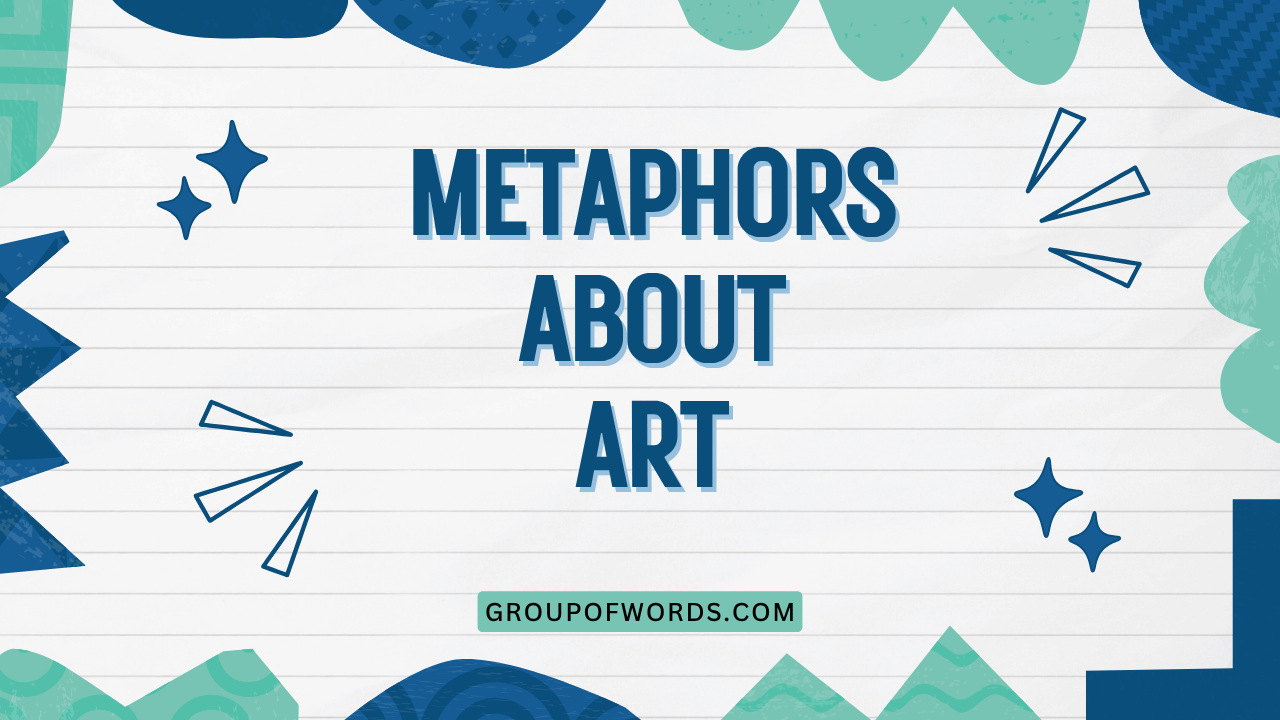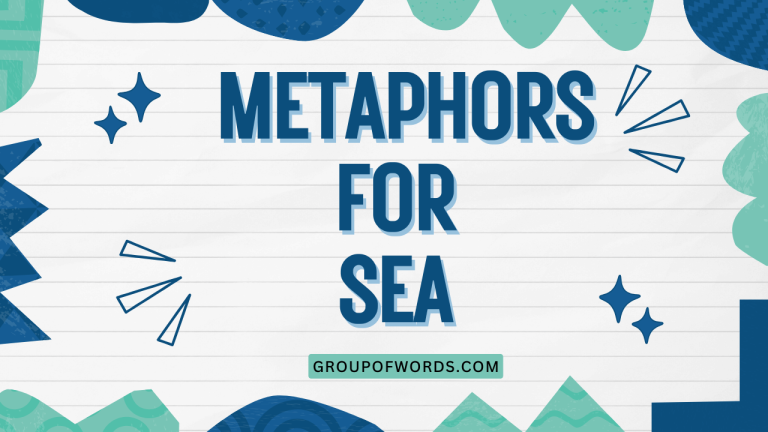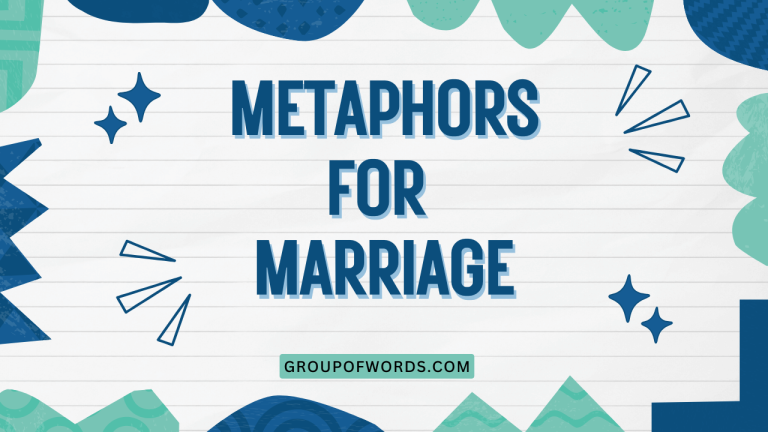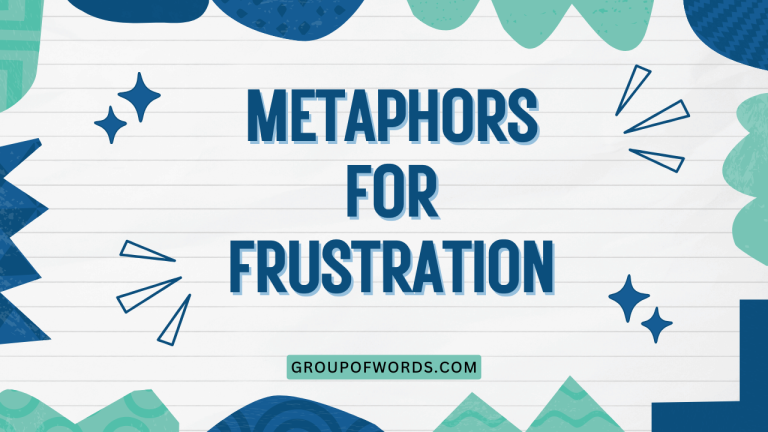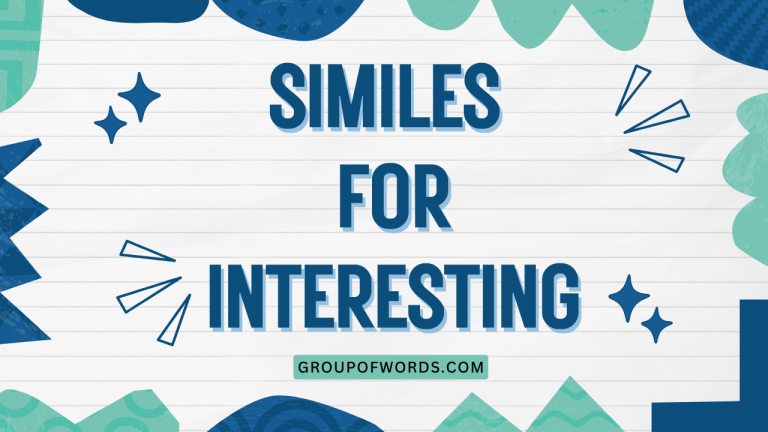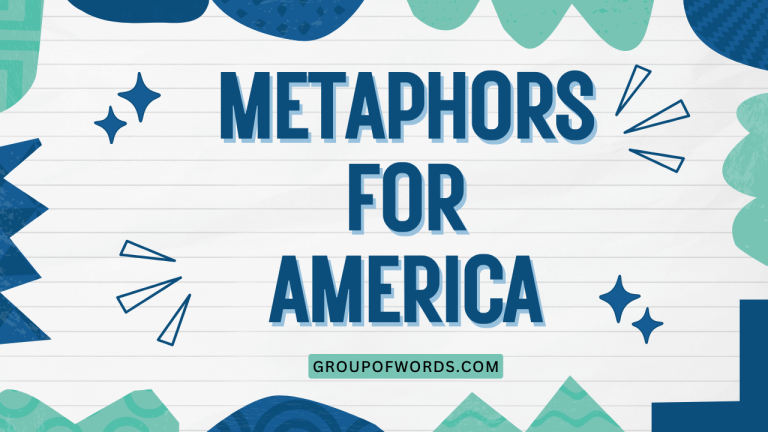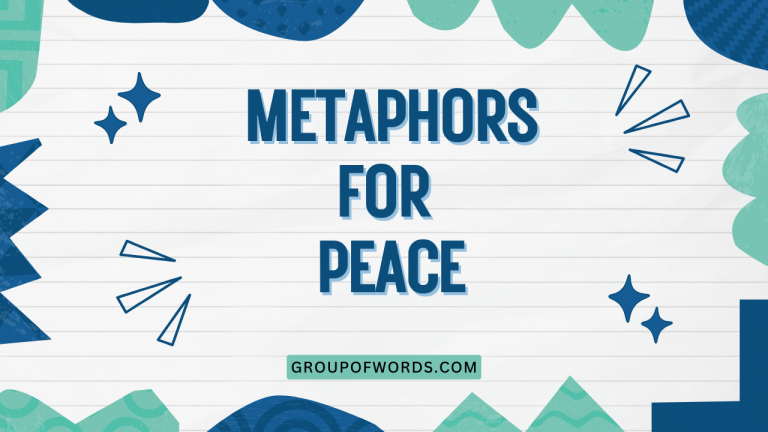Artful Language: Mastering Metaphors About Art
Metaphors are powerful tools that enrich our language, allowing us to express abstract ideas by comparing them to more concrete concepts. When applied to art, metaphors can provide profound insights into the creative process, the emotions evoked by art, and the role of art in society.
Understanding these metaphors enhances not only our appreciation of art but also our command of the English language. This article explores the diverse landscape of metaphors related to art, providing definitions, examples, and practical exercises to help learners of all levels master this fascinating aspect of grammar.
This guide is designed for anyone looking to deepen their understanding of English grammar, particularly those interested in art, literature, or creative writing. Whether you’re a student, a teacher, or simply an art enthusiast, this article will equip you with the knowledge and skills to recognize, interpret, and use metaphors about art effectively.
Table of Contents
- Definition of Metaphors About Art
- Structural Breakdown of Art Metaphors
- Types of Art Metaphors
- Examples of Metaphors About Art
- Usage Rules for Art Metaphors
- Common Mistakes with Art Metaphors
- Practice Exercises
- Advanced Topics in Art Metaphors
- Frequently Asked Questions
- Conclusion
Definition of Metaphors About Art
A metaphor is a figure of speech that directly compares two unrelated things, asserting that one thing *is* another. Unlike similes, which use words like “like” or “as” to make a comparison, metaphors create a more implicit and often more powerful connection.
Metaphors about art apply this principle to the realm of artistic expression, using concepts from other areas of life to describe, interpret, or analyze art. These metaphors can highlight various aspects of art, such as its creation, its emotional impact, or its social significance.
The function of a metaphor about art is to provide a new perspective, to illuminate hidden meanings, and to evoke a deeper understanding of the artwork or the artistic process. By using metaphors, we can transcend literal descriptions and tap into the emotional and intellectual resonance of art.
Metaphors about art can be found in various contexts, including art criticism, literature, casual conversations about art, and even the titles of artworks themselves. They enrich our language and help us communicate complex ideas about art in a more engaging and memorable way.
For example, saying “Her paintings are a window into another world” suggests that her art provides a unique and transformative experience, going beyond a simple description of the images depicted.
Structural Breakdown of Art Metaphors
Understanding the structure of a metaphor involves identifying two key elements: the tenor and the vehicle. The tenor is the subject of the metaphor – in this case, art or an aspect of art. The vehicle is the object or concept that is used to describe the tenor. The connection between the tenor and vehicle is what creates the metaphorical meaning.
Consider the metaphor: “Sculpture is frozen music.” Here, the tenor is “sculpture,” and the vehicle is “frozen music.” The metaphor suggests that sculpture, like music, possesses rhythm, harmony, and emotional expression, but it is captured in a static, tangible form. The effectiveness of the metaphor lies in the shared qualities between music and sculpture that are highlighted by the comparison.
Another important aspect is the ground of the metaphor, which refers to the shared characteristics or associations between the tenor and the vehicle. In the example above, the ground includes elements like form, structure, and emotional impact. Recognizing the ground helps to understand the intended meaning and appreciate the depth of the metaphor.
Metaphors can be simple, consisting of a single word or phrase, or they can be extended, developing the comparison over several sentences or even paragraphs. Extended metaphors allow for a more nuanced and detailed exploration of the relationship between the tenor and the vehicle.
Types of Art Metaphors
Metaphors about art can be categorized based on the aspect of art they emphasize. Here are some common types:
Metaphors of Creation
These metaphors describe the process of creating art, often comparing it to natural processes, craftsmanship, or other creative endeavors. They focus on the artist’s actions, the materials used, and the transformation that occurs during the creative process.
Metaphors of Perception
These metaphors explore how we experience and interpret art. They often relate art to sensory experiences, emotional responses, or intellectual understanding.
They highlight the subjective nature of art appreciation and the diverse ways in which art can affect us.
Metaphors of Impact
These metaphors describe the effect that art has on viewers, society, or culture. They can emphasize the power of art to inspire, challenge, provoke, or transform.
They often relate art to social movements, personal growth, or historical events.
Metaphors of the Artist
These metaphors focus on the artist themselves, often comparing them to other roles, figures, or archetypes. They explore the artist’s personality, motivations, and relationship to their art.
They help us understand the artist’s perspective and the influences that shape their work.
Examples of Metaphors About Art
Here are several examples of metaphors about art, categorized by type, to illustrate their diverse uses and meanings.
The following table provides examples of metaphors of creation, showcasing how art is often likened to natural processes or skilled craftsmanship.
| Metaphor | Explanation |
|---|---|
| The artist sculpted his vision from raw emotion. | The artist’s strong feelings were the starting point for his sculpture. |
| Her paintings are woven from dreams and memories. | Her art combines subconscious thoughts and past experiences. |
| His music is a tapestry of sound. | His music is complex and richly textured. |
| The poem is a carefully constructed edifice of words. | The poem is meticulously crafted, like a building. |
| Her dance is a flowing river of movement. | Her dance is graceful and continuous. |
| He paints with the passion of a wildfire. | His painting is energetic and intense. |
| The novel is a garden of interwoven stories. | The novel contains many interconnected narratives. |
| The film is a mosaic of fragmented memories. | The film pieces together disparate memories to form a whole. |
| Her sculpture is a blossoming of creativity. | Her sculpture represents a flourishing of artistic talent. |
| His photography is a capturing of fleeting moments. | His photography preserves transient moments in time. |
| The play is a crucible of human emotions. | The play tests and refines human emotions. |
| Her artwork is a seed of change planted in society. | Her art has the potential to bring about social transformation. |
| His illustrations are windows into fantastical worlds. | His illustrations offer glimpses into imaginary realms. |
| The composition is a bridge between cultures. | The composition connects different cultural traditions. |
| Her performance is a dance between light and shadow. | Her performance delicately balances contrasting elements. |
| His writing is a symphony of metaphors. | His writing uses many metaphors to create a rich effect. |
| The architecture is a skeleton of steel and glass. | The architecture is built upon a strong, visible framework. |
| The mural is a living history book. | The mural tells stories and preserves historical memory. |
| Her installation is a playground for the mind. | Her installation encourages creative thinking and exploration. |
| The song is a heartbeat of the city. | The song captures the rhythm and energy of urban life. |
| His art a mirror reflecting society’s flaws. | His art reflects back the imperfections of society. |
| Her pottery is earth given a voice. | Her pottery embodies a connection to nature. |
| His dance is a conversation with gravity. | His dance explores the dynamics of movement and balance. |
| The statue is time made visible. | The statue captures the essence of a particular era. |
| Her paintings are storms of color. | Her paintings are vibrant and intense expressions. |
The following table provides examples of metaphors of perception, showing how art is often associated with sensory experiences and emotional responses.
| Metaphor | Explanation |
|---|---|
| The painting is a feast for the eyes. | The painting is visually stimulating and enjoyable. |
| His music is a balm for the soul. | His music is soothing and comforting. |
| The poem is a mirror reflecting our inner selves. | The poem helps us understand ourselves better. |
| Her dance is a language spoken by the body. | Her dance communicates emotions and ideas nonverbally. |
| The film is a window into another culture. | The film provides insights into a different way of life. |
| His sculpture is a conversation with the past. | His sculpture engages with historical themes and traditions. |
| Her art is a voice for the voiceless. | Her art gives a platform to marginalized communities. |
| The novel is a journey through the human heart. | The novel explores the complexities of human emotions. |
| His photography is a testament to the beauty of everyday life. | His photography celebrates the ordinary aspects of life. |
| Her performance is a challenge to conventional thinking. | Her performance questions established norms and beliefs. |
| The music is a warm embrace on a cold day. | The music is comforting and reassuring. |
| His art is a punch to the gut, forcing you to feel. | His art is emotionally impactful and provokes strong feelings. |
| Her poetry is a landscape of the mind. | Her poetry explores the inner workings of the human mind. |
| The film is a time machine, transporting you to another era. | The film allows you to experience a different period in history. |
| His paintings are whispers of forgotten stories. | His paintings evoke memories of past events and experiences. |
| Her sculptures are silent screams against injustice. | Her sculptures express outrage and protest against unfairness. |
| The architecture is a monument to human ambition. | The architecture represents the aspirations and achievements of humanity. |
| The mural is a celebration of community spirit. | The mural embodies the values and unity of a local community. |
| Her installation is a sensory overload. | Her installation stimulates multiple senses simultaneously. |
| The song is an anthem for a generation. | The song expresses the feelings and experiences of a particular generation. |
| His art a beacon of hope in dark times. | His art provides inspiration in difficult times. |
| Her pottery is a reminder of our connection to nature. | Her pottery evokes a sense of harmony with the natural world. |
| His dance is a conversation with the divine. | His dance expresses spiritual themes and emotions. |
| The statue is a symbol of freedom. | The statue represents the concept of liberation. |
| Her paintings are echoes of the past. | Her paintings reflect historical events and cultural traditions. |
The following table provides examples of metaphors of impact, highlighting the transformative power of art on individuals and society.
| Metaphor | Explanation |
|---|---|
| Art is a catalyst for change. | Art can inspire social and political transformation. |
| Music is a universal language. | Music can transcend cultural and linguistic barriers. |
| Literature is a bridge between cultures. | Literature can promote understanding and empathy between different societies. |
| Dance is a celebration of life. | Dance expresses joy and vitality. |
| Film is a mirror reflecting society’s values. | Film reflects the beliefs and attitudes of a culture. |
| Sculpture is a testament to human ingenuity. | Sculpture demonstrates the creativity and skill of artists. |
| Art is a weapon against complacency. | Art challenges conventional thinking and encourages critical reflection. |
| The novel is a journey of self-discovery. | Reading a novel can lead to personal growth and understanding. |
| Photography is a record of history. | Photography preserves moments in time and documents historical events. |
| Performance art is a provocation to the status quo. | Performance art challenges social norms and established power structures. |
| Art is the soul of a nation. | Art embodies the values and identity of a country. |
| Music is the heartbeat of a city. | Music reflects the energy and rhythm of urban life. |
| Literature is the conscience of humanity. | Literature raises ethical questions and promotes moral reflection. |
| Dance is the poetry of motion. | Dance expresses emotions and ideas through graceful movements. |
| Film is the dream of a generation. | Film captures the hopes and aspirations of a particular era. |
| Sculpture is the memory of a civilization. | Sculpture preserves the legacy and traditions of a culture. |
| Art is the voice of the oppressed. | Art gives a platform to marginalized communities and advocates for justice. |
| The novel is the map of the human condition. | The novel explores the complexities and contradictions of human nature. |
| Photography is the eye of history. | Photography records events and perspectives that shape our understanding of the past. |
| Performance art is the spark that ignites change. | Performance art provokes dialogue and action towards social transformation. |
| His art is a revolution on canvas. | His art challenges the status quo. |
| Her performance is a lightning rod for controversy. | Her performance elicits strong and conflicting reactions. |
| His sculpture is a landmark in the landscape of modern art. | His sculpture is a significant contribution to contemporary art. |
| Her paintings are seeds of inspiration for future generations. | Her paintings encourage creativity and innovation in others. |
| His photography is a time capsule preserving the essence of a bygone era. | His photography captures the unique qualities of a past time. |
Usage Rules for Art Metaphors
Using metaphors effectively requires careful consideration of context, audience, and purpose. Here are some key guidelines:
- Clarity: Ensure that the metaphor is understandable and relevant to the topic. Avoid obscure or confusing comparisons. The connection between the tenor and vehicle should be reasonably clear to your audience.
- Originality: Strive for fresh and imaginative metaphors that offer new insights. Avoid clichés and overused expressions.
- Consistency: Maintain a consistent tone and style throughout the metaphor. Avoid mixing metaphors or creating jarring comparisons.
- Appropriateness: Choose metaphors that are appropriate for the context and audience. Consider the emotional and cultural associations of the vehicle.
- Relevance: Make sure the metaphor enhances understanding and adds value to the discussion. Avoid using metaphors solely for decorative purposes.
Always consider the potential interpretations of your metaphor and ensure that it aligns with your intended meaning. A well-chosen metaphor can significantly enhance the impact and memorability of your message.
Common Mistakes with Art Metaphors
Here are some common mistakes to avoid when using metaphors about art:
| Incorrect | Correct | Explanation |
|---|---|---|
| The painting was a loud whisper. | The painting was a silent scream. | A “loud whisper” is a contradiction; “silent scream” conveys intensity without sound. |
| His music was a square circle. | His music was a complex puzzle. | “Square circle” is nonsensical; “complex puzzle” suggests intricacy. |
| Her dance was a frozen fire. | Her dance was a controlled explosion. | “Frozen fire” is contradictory; “controlled explosion” suggests contained energy. |
| The film was a sweet lemon. | The film was a bittersweet symphony. | “Sweet lemon” is an odd pairing; “bittersweet symphony” conveys mixed emotions. |
| His sculpture was a dark light. | His sculpture was a subtle statement. | “Dark light” is contradictory; “subtle statement” suggests understated meaning. |
| The artwork was a hot ice cube. | The artwork was a chilling reminder. | “Hot ice cube” is contradictory; “chilling reminder” evokes a sense of unease. |
| His writing was a dry ocean. | His writing was a vast desert. | “Dry ocean” is contradictory; “vast desert” suggests emptiness and desolation. |
| Her performance was a soft hammer. | Her performance was a gentle nudge. | “Soft hammer” is an oxymoron; “gentle nudge” suggests subtle persuasion. |
| The mural was a quiet shout. | The mural was a vibrant declaration. | “Quiet shout” is contradictory; “vibrant declaration” conveys a bold statement. |
| The song was a heavy feather. | The song was a poignant melody. | “Heavy feather” is contradictory; “poignant melody” suggests emotional depth. |
Practice Exercises
Test your understanding of metaphors about art with these exercises:
Exercise 1: Identify the Metaphor
Identify the metaphor in each sentence and explain its meaning.
| Question | Answer |
|---|---|
| 1. Her voice was a silver thread weaving through the orchestra. | Metaphor: “Silver thread.” Meaning: Her voice was pure, delicate, and seamlessly integrated with the music. |
| 2. The city was a canvas, and the graffiti artists were its painters. | Metaphor: “City was a canvas.” Meaning: The city was a space for creative expression, and the graffiti artists transformed it with their art. |
| 3. His films are a tapestry of human experience. | Metaphor: “Tapestry of human experience.” Meaning: His films are complex and richly textured, reflecting the diverse aspects of human life. |
| 4. Her sculptures are silent poems etched in stone. | Metaphor: “Silent poems.” Meaning: Her sculptures express emotions and ideas in a nonverbal, artistic way. |
| 5. The stage was a battlefield of emotions. | Metaphor: “Battlefield of emotions.” Meaning: The performance was intense and filled with conflicting feelings. |
| 6. His paintings are a window into his soul. | Metaphor: “Window into his soul.” Meaning: His paintings offer insight into his innermost thoughts and feelings. |
| 7. The novel is a labyrinth of plot twists and turns. | Metaphor: “Labyrinth of plot twists.” Meaning: The novel’s plot is complex and confusing. |
| 8. Her dance is a conversation between body and music. | Metaphor: “Conversation between body and music.” Meaning: Her dance expresses a harmonious relationship between physical movement and musical rhythm. |
| 9. The play is a mirror reflecting the audience’s own lives. | Metaphor: “Mirror reflecting the audience’s own lives.” Meaning: The play resonates with the audience’s personal experiences and emotions. |
| 10. His art is a beacon of hope in a world of despair. | Metaphor: “Beacon of hope.” Meaning: His art provides inspiration and optimism in difficult times. |
Exercise 2: Create Your Own Metaphors
Create a metaphor about art for each of the following prompts:
| Prompt | Your Metaphor |
|---|---|
| 1. Describe the feeling of seeing a powerful artwork. | The artwork was a thunderclap of inspiration, shaking me to my core. |
| 2. Describe the process of creating a sculpture. | Sculpting is like coaxing a form out of the stone’s silent resistance. |
| 3. Describe the impact of a thought-provoking film. | The film was a seed planted in my mind, growing into new perspectives. |
| 4. Describe the experience of listening to moving music. | The music was a river carrying me away on a current of emotion. |
| 5. Describe the role of art in society. | Art is the soul of society, giving voice to its dreams and fears. |
| 6. Describe the artist’s struggle. | The artist’s struggle is a dance with doubt. |
| 7. Describe the feeling of creative fulfillment. | Creative fulfillment is sunlight after a long winter. |
| 8. Describe the power of storytelling. | Storytelling is a bridge across generations. |
| 9. Describe the beauty of imperfection in art. | Imperfection is the spice that makes art flavorful. |
| 10. Describe the influence of art on culture. | Art is the wind that shapes the dunes of culture. |
Advanced Topics in Art Metaphors
For advanced learners, consider exploring the following topics:
- Extended Metaphors: Analyze how metaphors can be developed and sustained over longer passages to create complex and nuanced meanings.
- Symbolism and Allegory: Investigate the relationship between metaphors, symbols, and allegories in art, and how they contribute to deeper layers of interpretation.
- Cultural Context: Explore how cultural values and beliefs influence the use and interpretation of metaphors about art.
- Interdisciplinary Approaches: Examine how metaphors from other fields, such as science, philosophy, or psychology, can be applied to art to provide new perspectives.
- Metaphor and Cognition: Research the cognitive processes involved in understanding and using metaphors, and how they shape our perception of art.
By delving into these advanced topics, you can further refine your understanding of metaphors about art and enhance your ability to analyze and appreciate artistic expression.
Frequently Asked Questions
Here are some frequently asked questions about metaphors about art:
- What is the difference between a metaphor and a simile?
A metaphor directly equates two things, stating that one thing *is* another. A simile, on the other hand, uses “like” or “as” to make a comparison. For example, “Her voice was a silver thread” is a metaphor, while “Her voice was *like* a silver thread” is a simile.
- Why are metaphors useful in describing art?
Metaphors provide a way to express abstract ideas and emotional responses to art in a more concrete and engaging way. They can help us to see art from a new perspective and to appreciate its deeper meanings.
- How can I improve my ability to understand metaphors about art?
Practice reading and analyzing art criticism, literature, and other texts that use metaphors. Pay attention to the context in which the metaphors are used and consider the potential interpretations of the comparison.
- Are some metaphors about art more effective than others?
Yes, effective metaphors are clear, original, relevant, and appropriate for the context and audience. They should enhance understanding and add value to the discussion, rather than simply serving as decorative language.
- How can I avoid using clichés in my metaphors about art?
Strive for fresh and imaginative comparisons that offer new insights. Avoid overused expressions and try to find unique connections between the tenor and the vehicle.
- Can a metaphor about art be misinterpreted?
Yes, metaphors can be open to interpretation, and different people may understand them in different ways. It is important to consider the potential interpretations of your metaphor and to ensure that it aligns with your intended meaning.
- How do cultural differences affect the interpretation of art metaphors?
Cultural values and beliefs can significantly influence the use and interpretation of metaphors. A metaphor that resonates in one culture may not have the same meaning or impact in another. It’s crucial to be aware of these cultural nuances when using or interpreting metaphors about art.
- What role does personal experience play in understanding art metaphors?
Personal experiences and emotions greatly influence how individuals interpret art metaphors. Our unique backgrounds shape our understanding and emotional connection to the comparisons made, leading to diverse and subjective interpretations of the artwork.
Conclusion
Metaphors about art are powerful tools for understanding, interpreting, and communicating about artistic expression. By mastering the definition, structure, types, and usage rules of these metaphors, you can enhance your appreciation of art and improve your command of the English language.
Remember to strive for clarity, originality, and relevance in your metaphors, and to avoid common mistakes that can undermine their effectiveness.
Continue to practice identifying and creating metaphors about art, and explore advanced topics to deepen your understanding. With dedication and effort, you can unlock the artful language that enriches our experience of the world.
